The hits keep on coming from fly-fishing gear manufacturers in May, with a host of new items hitting the market. For starters, how about a redesigned and affordable classic fly reel? Or maybe a new hoody that promises to replace your dependable old cotton version with something a bit more sensible on the water? Or a pair of breathable waders that fit in a stuff sack the size of a large burrito?
Or, how about a new high-end fly line created to throw big dry flies and terrestrial patterns and fat trout that hold next to the bank? With summer in mind, how about a new pair of light-weight waders? Or a graphite rod offering from a company that, until now, only crafted glass fly rods? All this and more are hitting shelves and available online in May.
Patagonia Swiftcurrent Ultralight waders
These light, breathable and — best of all — packable waders come in both men’s and women’s sizes and are billed as the “go-everywhere, fish-everything” wader. The new Patagonia Swiftcurrent Ultralight waders (pictured at top) roll into a stuff sack and weigh all of 36 ounces. For folks like me, who abhor wearing waders at all, and only do so when the elements demand it, these waifish waders might make the cut. They’re perfect for anglers who hike into fishing destinations or for travelers who have to beat the 50-pound weight limit at the airline counter.
And, just because they’re light, doesn’t mean they’re insubstantial. The Swiftcurrent Ultralights sport single-seam construction for improved durability, anatomical booties and a gusseted crotch for freedom of movement. They do feature Patagonia’s H2No durable water repellent shell and a largely recycled product base. The Swiftcurrent Ultralights are made for warm-weather anglers who need to stay dry, and they’re ideal “just in case” waders for anglers who prefer to wade wet, but might need some added warmth during a summer squall in the mountains.
Retail: $499
BUY SWIFTCURRENT ULTRALIGHT WADERS

Redington Crosswater fly reel
Redington has upgraded its introductory Crosswater fly reel with a fully carbon disc-drag system that functions more smoothly and remains nice and light. Additionally, the upgraded Crosswater features a large drag knob that’s easy to find without having to hunt for it, which is an underappreciated feature. The reel comes in two sizes — 4, 5 and 6 for small water and freshwater, and a 7,8 and 9 for bass, steelhead, salmon and even saltwater use. The company continues to offer some of the best gear for new and budget-minded anglers — it’s a point of pride, actually.
“To have an affordable feel option that still includes a carbon drag is a killer deal for anyone looking to get into fly fishing, or to have a reel that brings performance and value,” says Ethan Law, Redington’s community manager.
Indeed, the company is nothing if not consistent, and I’m not the least bit ashamed to admit that I own and regularly use Redington gear (one of my favorite big-water fly rods is my 7-weight Redington Crux). If only all quality gear had this price tag…
Retail: $64.99
BUY THE REDINGTON CROSSWATER REEL

Skwala Apex Hoody
Skwala just keeps upping its outerwear game, and that’s good for those of us who fish. With its new Apex Hoody, the company hopes to combine the comfort of the everyday cotton hoody with something that’s a lot more functional on the water.
Made from Karuishi fleece and sporting Skwala’s patented stretchiness, the hoody is still something you can happily wear every day, but it'll offer a bit more function on the water. Ditching the cotton likely makes the hoody lighter and a bit more breathable (and certainly more resistant to the odd splash of cold creek water). The garment’s kangaroo pocket features zippers so fly boxes, phones or cameras can be safely stowed while fishing. Overall, it’s a seriously functional sweatshirt that’ll last, while offering up some flexibility to the wearer.
Retail: $199

RIO Premier Bank Robber fly line
As the name implies, RIO’s Bank Robber fly line is designed to put big bugs tight to the banks — a needed cast where RIO’s home office is located, not too far from the South Fork of the Snake River and the Henry’s Fork. On RIO’s local rivers, big, surly browns, rainbows and cutthroats hug the banks during terrestrial season waiting for unlucky hoppers, ants and beetles to fall into the river. Sporting a front taper that’s big enough to turn over large, wind-resistant flies, the Bank Robber is an excellent choice for anglers who fish from drift boats and pound the banks for big trout all day.
“The bites we look forward to most every year on our home waters in Idaho involve big dry flies and big trout holding tight to the bank,” says RIO R&D Manager Chris Walker. “That starts with stoneflies in May and continues, uninterrupted, through hoppers in September. The Bank Robber evolved over years of experience and experimentation in our backyard and I’m looking forward to having one on my reel all season long.”
The line includes some of RIO’s dependable tech, including its SlickCast coating and a color change right at the sweet spot in the taper. The line also sports a long back taper that makes mending easier and accomplishing that needed drag-free drift. As an Idaho angler, this line made me do a face-palm. Of course those of us who live here need this line. But, honestly, for any angler who throws big, fluffy dry flies, this line ought to raise some eyebrows.
Retail: $99.99
The Moonlit Umbra graphite series
Up until recently, the Idaho-based rodmaker Moonlit focused solely on fiberglass rods. Not anymore. The company’s new Umbra graphite rods still pay homage to its “Lunar” glass roots. While the Umbra rods are, indeed, graphite and quite a bit faster than the supple glass rods the company is known for, the rod tip is quite a bit softer, which helps slow the rod down a bit, and allow for accurate fly presentations. The Umbras come in line weights 3 through 5, and include a 3-weight and a 5-weight nymphing rod.
One nice feature about the Umbra rods? They’re very price-point friendly. But, as Brandon Moon, the company’s owner, says, anglers don’t have to sacrifice quality just because the rods are less expensive. Indeed, across the company’s growing line of gear offerings, affordability is a top priority. As for the quality? Well, I can vouch for Moonlit’s glass rods. I’m excited to get my hands on a graphite offering, and when I do, I’ll let you know what I think.
Retail: $169

Riversmith Swiftcast fly rod holder for rafts
Rafts break rods. Well, not the rafts themselves, but the anglers or the oars in them, the rocks they bump into, the overhanging branches they skirt by on the river, and so on. Which makes proper rod storage options for rafts a must-have for most raft owners that don't want to spend their spare time filling our rod repair forms. DIY solutions abound and a few raft makers and small companies have brought solutions to market. Some good, some bad. With it's latest product offering, Boulder, CO-based Riversmith — best known for making rooftop rod holders — is looking to best them all. Designed as "universal" fly rod holder that can adapt to rafts of virtually all shapes and sizes, Riversmith is looking to make the Swiftcast the choice for raft runners.
Made to fit rafts ranging from as small as 8 feet to 15 feet and longer—and designed to conform to varying raft shapes—the new Riversmith Swiftcast rod holder is built from a combination of aluminum, stainless steel, and high-strength plastic polymer, and weighs in at a mere 7.5 pounds. It's also designed to be mounted in pairs on either the inside or outside of a raft frame's oar towers.
Retail: $349.99




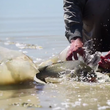






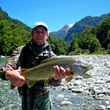









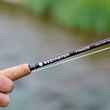
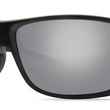








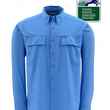
Comments
AP Drift replied on Permalink
Does anybody care these days if their fly line floats? Seems like there is an epidemic of newly designed floating technologies that sink the first time they are fished. Big name companies--one mentioned in this article--who sell their lines for $100 or more, and not one article I've read mentions this. Hmm. Do they even test these lines before selling them...?
Pages